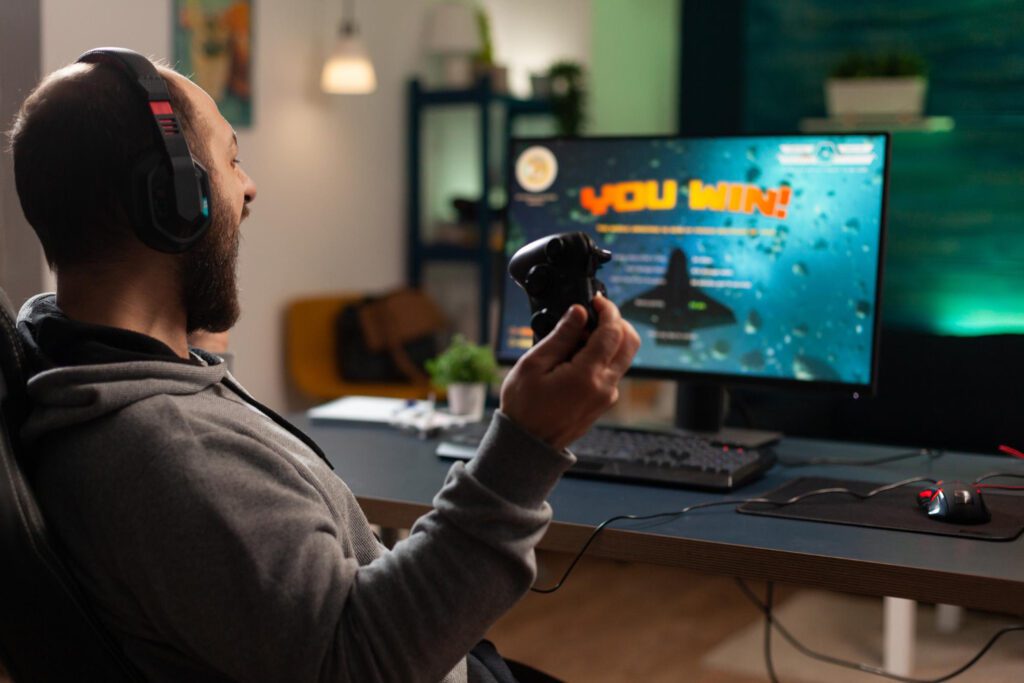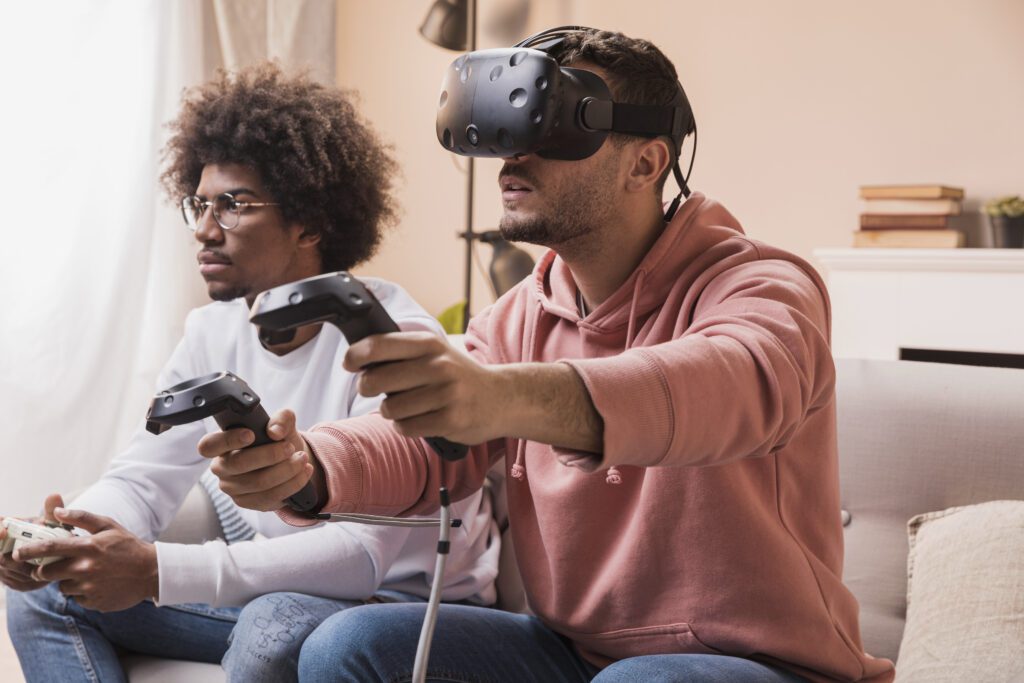Master Game Audio: Creating Immersive Soundscapes
In the realm of video game development, audio design is often an underappreciated aspect that can significantly enhance the player’s experience. The creation of immersive soundscapes is not merely about adding background music or sound effects; it involves a complex interplay of various audio elements that work together to create a believable and engaging environment. This article delves into the technical aspects of game audio, exploring the methodologies, technologies, and psychological principles that contribute to effective sound design in video games.
The Importance of Sound in Gaming
Sound in video games serves multiple purposes: it provides feedback, enhances storytelling, and creates an emotional connection with the player. According to a study by the University of Southern California, players are more likely to remember a game’s narrative when it is accompanied by a well-crafted audio landscape. The research indicates that sound can evoke emotions and influence player behavior, making it a critical component of game design.

Types of Game Audio
Game audio can be broadly categorized into three types: sound effects (SFX), music, and dialogue. Each type plays a unique role in shaping the player’s experience.
Sound Effects (SFX)
Sound effects are crucial for providing feedback and enhancing realism. They can range from environmental sounds, such as rustling leaves or distant thunder, to specific actions like gunfire or footsteps. The implementation of spatial audio techniques, such as binaural audio, allows players to perceive the direction and distance of sounds, further immersing them in the game world. For instance, in the game “Hellblade: Senua’s Sacrifice,” the use of binaural audio was pivotal in conveying the protagonist’s mental state, creating a hauntingly immersive experience.
Music
Music in video games serves to set the tone and pace of gameplay. Dynamic music systems, such as adaptive or interactive music, respond to player actions and in-game events. For example, in “The Legend of Zelda: Breath of the Wild,” the music shifts seamlessly based on the player’s actions, enhancing the sense of exploration and discovery. Research by the International Journal of Human-Computer Interaction indicates that adaptive music can significantly increase player engagement and satisfaction.
Dialogue
Dialogue is essential for storytelling and character development. High-quality voice acting can elevate a game’s narrative, making characters more relatable and memorable. The integration of dialogue with sound effects and music creates a cohesive audio experience. In “The Witcher 3: Wild Hunt,” the combination of voice acting, ambient sounds, and a rich musical score contributes to a deeply immersive narrative experience.
Technological Advances in Game Audio
The evolution of technology has transformed the landscape of game audio. The advent of advanced audio engines, such as FMOD and Wwise, has enabled sound designers to create complex audio environments with relative ease. These engines support features like real-time audio processing, allowing for dynamic soundscapes that react to player interactions.
Spatial Audio and 3D Sound
Spatial audio techniques have become increasingly important in creating immersive soundscapes. Technologies such as Dolby Atmos and Sony’s 3D Audio provide a three-dimensional audio experience, allowing players to perceive sounds from all directions. This is particularly effective in first-person shooters and horror games, where the ability to locate sounds can be crucial for gameplay. A study published in the Journal of the Audio Engineering Society found that players using spatial audio systems performed better in locating sound sources compared to those using traditional stereo setups.
Procedural Audio
Procedural audio is another innovative approach that allows for the generation of sound in real-time based on algorithms. This technique can create unique soundscapes that adapt to the game environment and player actions. For example, in “No Man’s Sky,” procedural audio is used to generate sounds for various alien planets, ensuring that each environment feels distinct and alive. Research by the ACM Transactions on Graphics highlights that procedural audio can enhance the realism of virtual environments, making them more engaging for players.
Psychological Principles in Sound Design
Understanding the psychological impact of sound is crucial for effective game audio design. The concept of auditory scene analysis, introduced by psychologist Albert Bregman, explains how humans perceive and interpret sounds in their environment. Game designers can leverage this principle to create soundscapes that guide player attention and enhance immersion.
Emotional Resonance
Sound has the power to evoke emotions, and this can be strategically used in game design. Research by the University of California, Berkeley, indicates that certain musical elements, such as tempo and harmony, can elicit specific emotional responses. For instance, a fast tempo may create excitement, while a slow tempo can evoke sadness or tension. By carefully selecting musical elements, sound designers can manipulate player emotions to enhance the overall gaming experience.
Foley Artistry
Foley artistry is the art of creating sound effects that are synchronized with the actions on screen. This technique adds a layer of realism to the audio experience. For example, the sound of footsteps on different surfaces can be recorded and manipulated to match the character’s movement, enhancing immersion. The meticulous work of Foley artists in games like “Red Dead Redemption 2” contributes significantly to the game’s authenticity and emotional impact.
Case Studies: Successful Implementation of Game Audio
Several games exemplify the successful integration of immersive soundscapes, showcasing the principles discussed above.
“The Last of Us Part II”
This game is renowned for its exceptional audio design. The use of spatial audio allows players to hear enemies approaching from different directions, creating a tense atmosphere. The dynamic music score adapts to gameplay, intensifying during combat and softening during exploration. The combination of these elements results in a deeply immersive experience that enhances the narrative and emotional weight of the story.
“Ghost of Tsushima”
“Ghost of Tsushima” employs a rich soundscape that reflects the game’s setting. The use of traditional Japanese instruments in the score, combined with environmental sounds like rustling grass and flowing water, creates an authentic atmosphere. The game’s audio design not only enhances immersion but also serves to educate players about Japanese culture and history.
Future Trends in Game Audio
The future of game audio is poised for exciting developments. As virtual reality (VR) and augmented reality (AR) technologies continue to evolve, the demand for immersive audio experiences will grow. The integration of haptic feedback with audio can create a multi-sensory experience, further enhancing immersion. Additionally, advancements in artificial intelligence may lead to more sophisticated adaptive audio systems that respond to player behavior in real-time.

As VR technologies advance, the demand for immersive audio experiences will continue to rise.
Conclusion
In conclusion, mastering game audio is a multifaceted endeavor that requires a deep understanding of sound design principles, technological advancements, and psychological impacts. By leveraging these elements, sound designers can create immersive soundscapes that enhance gameplay, evoke emotions, and enrich storytelling. As the gaming industry continues to evolve, the importance of high-quality audio design will only increase, making it an essential area for developers to focus on. The successful implementation of sound in games like “The Last of Us Part II” and “Ghost of Tsushima” serves as a testament to the power of audio in creating unforgettable gaming experiences.

